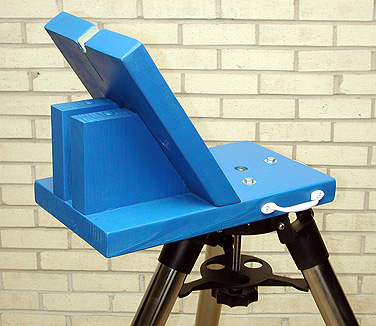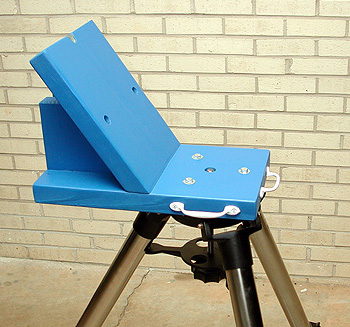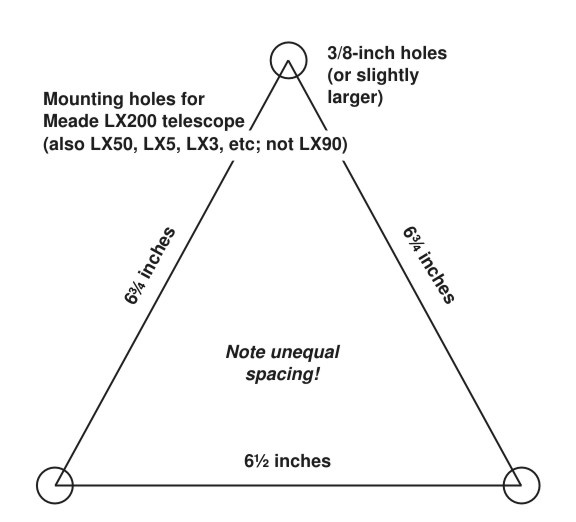


A Wooden Wedge for the Meade LX200 and Similar Telescopes
Michael A. Covington
Copyright 2003



A Wooden Wedge for the Meade LX200 and Similar Telescopes
Michael A. Covington
Copyright 2003


Because of the difficulty of carrying my 38-pound Meade Superwedge, I'm experimenting with this non-adjustable lightweight wooden wedge in its place. It cost me less than $20 to build, and half of the money went for the white handles that I added in order to have places to hang the control box.
Using a non-adjustable wedge is much easier than it sounds. I do not take my telescope outside the range of about 31 to 35 degrees north latitude, so wide adjustments are not needed.
I use this wedge with an 8-inch Meade LX200. To polar-align it, I move the tripod and adjust the lengths of the legs. Clumsy though this seems, adjustments to 1/4-degree precision are easy. To keep the telescope from falling over while I adjust the length of a leg, I lean against it, supporting its weight with my back; this is a surprisingly light burden because it's so nearly balanced.
An added benefit is that the wood absorbs vibration in much the same manner as the rubber pads that people often put under the feet of the tripod. Thus, even though this wedge weighs less than 10 pounds, it is less vibration-prone than most metal wedges.
The wedge is made from about 4 feet of 2x10 pine lumber, 9 1/4 inches wide, carefully selected from a larger piece to avoid knots. It is held together with carriage bolts (which are visible) and deck screws (whose heads have been countersunk and covered with wood filler). It's painted with Krylon "Fusion" paint, which is unusually tough. To reduce wear, the slot at the top is lined with sheet metal held in with epoxy.
One pitfall awaits the unwary. The mounting holes for an LX200 are not in an equilateral triangle. The lower 2 holes are 6 1/2 inches apart, but each of them is 6 3/4 inches from the top hole, as shown in the diagram. As a result, the top hole is 9/32 inch higher than it would be with a 6 1/2-inch equilateral triangle.
